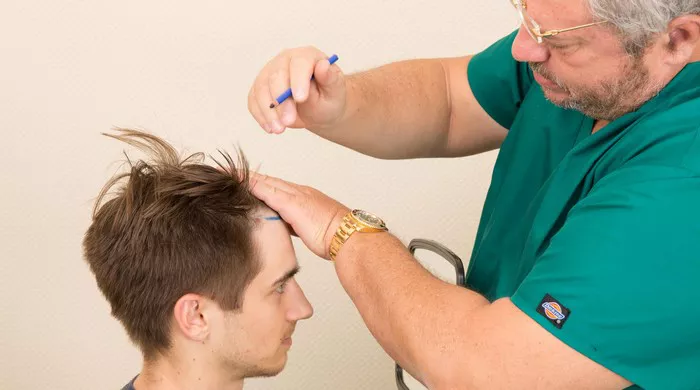Embarking on the journey of a hair transplant can be both exciting and daunting for individuals seeking to restore their hairline and regain confidence. One common concern that often arises is whether shaving the head is a necessary step for undergoing a hair transplant procedure. In this article, we provide a detailed guide addressing this question and catering to the needs of individuals considering a hair transplant.
Understanding Hair Transplant Techniques
Before delving into the question of whether shaving the head is required for a hair transplant, it’s essential to understand the different techniques used in hair restoration procedures. The two primary methods employed by hair transplant surgeons are Follicular Unit Transplantation (FUT) and Follicular Unit Extraction (FUE).
Follicular Unit Transplantation (FUT):
FUT, also known as the strip method, involves harvesting a strip of hair-bearing skin from the donor area (typically the back or sides of the scalp).
The donor strip is then dissected into individual follicular units, which are transplanted into the recipient area (balding or thinning areas of the scalp).
Follicular Unit Extraction (FUE):
FUE involves harvesting individual follicular units directly from the donor area using a small punch-like instrument.
These follicular units are then transplanted into the recipient area, similar to FUT.
Do You Have To Shave Your Head For A Hair Transplant?
The answer to whether you have to shave your head for a hair transplant largely depends on the specific technique used and the preferences of the surgeon and patient. Let’s explore the considerations for each method:
Follicular Unit Transplantation (FUT):
With the FUT method, shaving the head is typically required, as it allows the surgeon to access and harvest the donor strip from the scalp easily.
The donor area is shaved to a length that allows the surgeon to remove the strip of skin while minimizing damage to surrounding hair follicles.
However, only the donor area needs to be shaved, leaving the rest of the hair untouched.
Follicular Unit Extraction (FUE):
With FUE, the need for shaving the head may vary depending on the specific technique used and the number of grafts required.
In some cases, shaving the entire head may be necessary to facilitate the extraction of follicular units from the donor area.
However, in certain instances, particularly with smaller FUE procedures or when harvesting grafts from areas with longer hair, it may be possible to perform the procedure without shaving the head completely.
Considerations Before and After Hair Transplant
Before deciding whether to shave your head for a hair transplant, it’s essential to consider several factors:
Extent of Hair Loss: The extent of hair loss and the number of grafts required for transplantation can influence the decision to shave the head. Individuals with significant balding or thinning may find it more practical to shave the entire head for a more seamless procedure.
Patient Preferences: Ultimately, the decision to shave the head for a hair transplant should be based on the preferences of the patient.
Some individuals may feel more comfortable with a shaved head, while others may prefer to maintain longer hair for aesthetic reasons.
Surgeon’s Recommendations: Consulting with a qualified hair transplant surgeon is essential for evaluating candidacy and discussing the most suitable treatment approach. The surgeon can provide personalized recommendations based on the patient’s hair loss pattern, donor hair availability, and desired outcome.
Post-Operative Care: Following the hair transplant procedure, proper post-operative care is essential for promoting optimal healing and ensuring successful results. Patients should follow the specific instructions provided by their surgeon regarding wound care, medication usage, and activity restrictions.
Conclusion
In conclusion, whether you have to shave your head for a hair transplant depends on factors such as the specific technique used, the extent of hair loss, patient preferences, and the recommendations of the surgeon. While shaving the head may be necessary for certain procedures, such as FUT or larger FUE sessions, it may not always be required for smaller FUE procedures or when harvesting grafts from areas with longer hair. Consulting with a qualified hair transplant surgeon is crucial for evaluating candidacy and determining the most appropriate treatment approach. By considering these factors and making an informed decision, individuals can undergo a hair transplant with confidence, knowing that they are taking the necessary steps towards achieving their desired hair restoration goals.
Is It Worth It To Get A Hair Transplant

